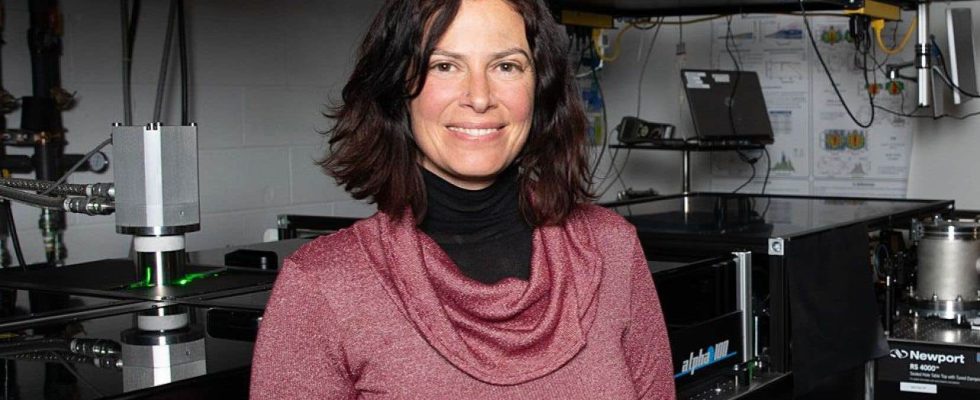This text is part of the special Research section
The most powerful laser in Canada is located in Quebec, and a woman is in charge of the laboratory. Portrait of researcher Heide Ibrahim, for whom the lasers of the Advanced Laser Light Source of the Energy, Materials and Telecommunications Center of the National Institute of Scientific Research (INRS) no longer hold any secrets… or almost.
As far back as she can remember, Mme Ibrahim has always had a penchant for light and photography. “When I saw a laser for the first time, I fell in love with it,” says with a laugh the woman who completed her bachelor’s degree in engineering at the University of Cologne in applied sciences. It was these light wave generators that motivated her to enroll in a doctorate in physics at the Free University of Berlin, and then to begin a postdoctoral fellowship in Okazaki, Japan.
It was in 2009 that the German scholar moved to Quebec to take up a position at INRS. Since October, Mme Ibrahim is the head of the Femtosecond Sources Laboratory or Advanced Laser Light Source (ALLS), a unique research infrastructure in the world specializing in the creation of a new type of lasers. This establishment where she works with the director of the Energy, Materials and Telecommunications Center, François Légaré, has a variety of high-intensity lasers with diverse applications. These range from basic research to advanced manufacturing and medicine to art. “We also have uses in the environment and in agriculture,” adds M.me Ibrahim. We can take images of roots in the earth. We are developing techniques to determine what minerals are deposited there and how this is modified with climate change.”
Fundamental research
Within ALLS, the work of Mme Ibrahim are looking at ultrafast molecular imaging. Using a reaction microscope, the person who describes herself on LinkedIn as a “molecular filmmaker” uses two separate laser pulses. The first, with a view to establishing dynamics in a molecule and the second, to make it explode.
“We remove the electrons very quickly and only the positive fragments remain which are no longer stable. We guide all these elements into a detector, and we repeat the same thing on the other side with the electrons,” explains the physicist. She is thus able to observe the ions and electrons in order to understand how the molecule was structured at the time of the second pulse. “That way, I can make molecular films,” she adds.
These movements are so brief that, to see them, Mme Ibrahim needs lasers with very short pulses, of the order of 10 -15 seconds, imperceptible to the naked eye. “The movements of atoms are very fast, but my laser is even faster. So I can take images or spectroscopy of something that moves at the atomic scale, she describes. And for me, it’s amazing to see what happens in such a small molecule with this laser. »
As this work is carried out in fundamental research, there is still no direct application related to it to date. “We have other experiences at home where we can clearly discover what it is for. But my research is really dedicated to improving knowledge,” summarizes the director of ALLS.
A woman in a world of men
Mme Ibrahim remains one of the rare female researchers in a traditionally male environment. Already, during her postdoctoral work in Japan, she remembers being the only woman in the laboratory.
If she considers herself happy with her career, she adds that she has received very good support from her peers in order to reconcile her work and her family life. “Generally, it works very well,” she rejoices.
For her innovations, the director of ALLS obtained the Kavli scholarship in 2022 to highlight her contributions to research, where she notably led an international team which succeeded in the first road movie of moving molecular fragments. His activities have also attracted the attention of major scientific journals such as Science And Physics Today. Closer to us, the magazine Quebec Science mentioned his study during his 29e edition of the discoveries of the year in Quebec.
Mme Ibrahim concedes that there is still a lack of female role models in his field. However, she cites, as an example, the case of Canadian Donna Strickland, pioneer in lasers and winner of the Nobel Prize in physics in 2018. The researcher in turn hopes to be able to also lead future scientists to follow in her footsteps. “I would be happy to one day be able to inspire girls to continue the path of curiosity. »
This content was produced by the Special Publications team at Duty, relating to marketing. The writing of the Duty did not take part.
